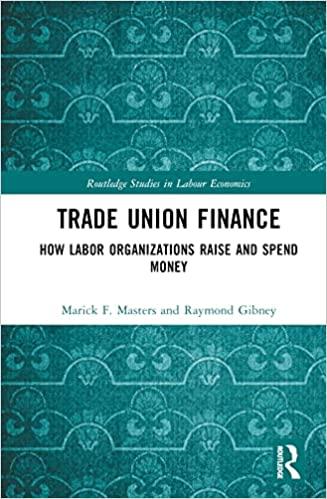Question
On September 9, 1992, Medical Care America was formed by a merger between two of the largest and fastest-growing providers of outpatient healthcare services in
On September 9, 1992, Medical Care America was formed by a merger between two of the largest and fastest-growing providers of outpatient healthcare services in the United States: Medical Care International, Inc. (MCI) an operator of outpatient surgery centers, and Critical Care America, Inc. (CCA), a provider of home-infusion therapies (i.e. programs in which outpatients are supplied with equipment and training to administer their own drugs, therapies, and recovery programs at home). Examples of infusion therapies include chemotherapy, nutrition support, IV antibiotics, and so forth.
The merger received overwhelming shareholder approval, with at least 80 percent of each companys shareholders voting in favor. Analysts lauded the deal as well. But merely 16 days after the merger announcement, the new company declared that its third-quarter earnings would be flat, as opposed to market expectations of 30 percent profit growth. On that day, Medical Care stock dropped 57%. Two months later, the chairman of Medical Care resigned.
More bad news was to come: in the fourth quarter of 1992, Medical Cares earnings fell 25 percent below the previous year. In the first quarter of 1993, net income dropped 32 percent from the previous years comparable period. The surgery centers that portion of the business contributed by the former Medical Care International were doing well; revenues were growing briskly. It was the infusion business (formerly of Critical Care) that was faltering.
Only after the merger was it learned just how badly competitive pressures were pushing prices down in the infusion industry, and how badly Critical Care had been falling behind in the changing health-care environment. Its prices were as much as 26 percent higher than those of its rivals, due to its propensity to provide high-level service regardless of the costFounder Patrick S. Smith had been so eager to prove that his company could provide many of the staff and equipment needed to treat medical problems such as cancer, cardiac disease and bone-marrow transplants. In addition, Critical Cares sales force had focused almost solely on marketing to physicians (who would then send their patients to Critical Cares centers) rather than to managed-care networks and insurance companies, which increasingly dominated the heath care market, and whose profit margins depended upon low costs. Because of Critical Cares uncompetitive prices and its refusal even to negotiate them, it often was bypassed by HMOs and insurers.
After the earning s disappointments were revealed, 15 shareholders filed a lawsuit against Medical Care, charging that Critical Cares problems were so severe that managers had to have known about them. But a senior vice president of Medical Care asserted, We were very surprised by the problem and had no idea of the problem on September 9.
Do you think the problems would have been uncovered with better due diligence?
Step by Step Solution
There are 3 Steps involved in it
Step: 1

Get Instant Access to Expert-Tailored Solutions
See step-by-step solutions with expert insights and AI powered tools for academic success
Step: 2

Step: 3

Ace Your Homework with AI
Get the answers you need in no time with our AI-driven, step-by-step assistance
Get Started


